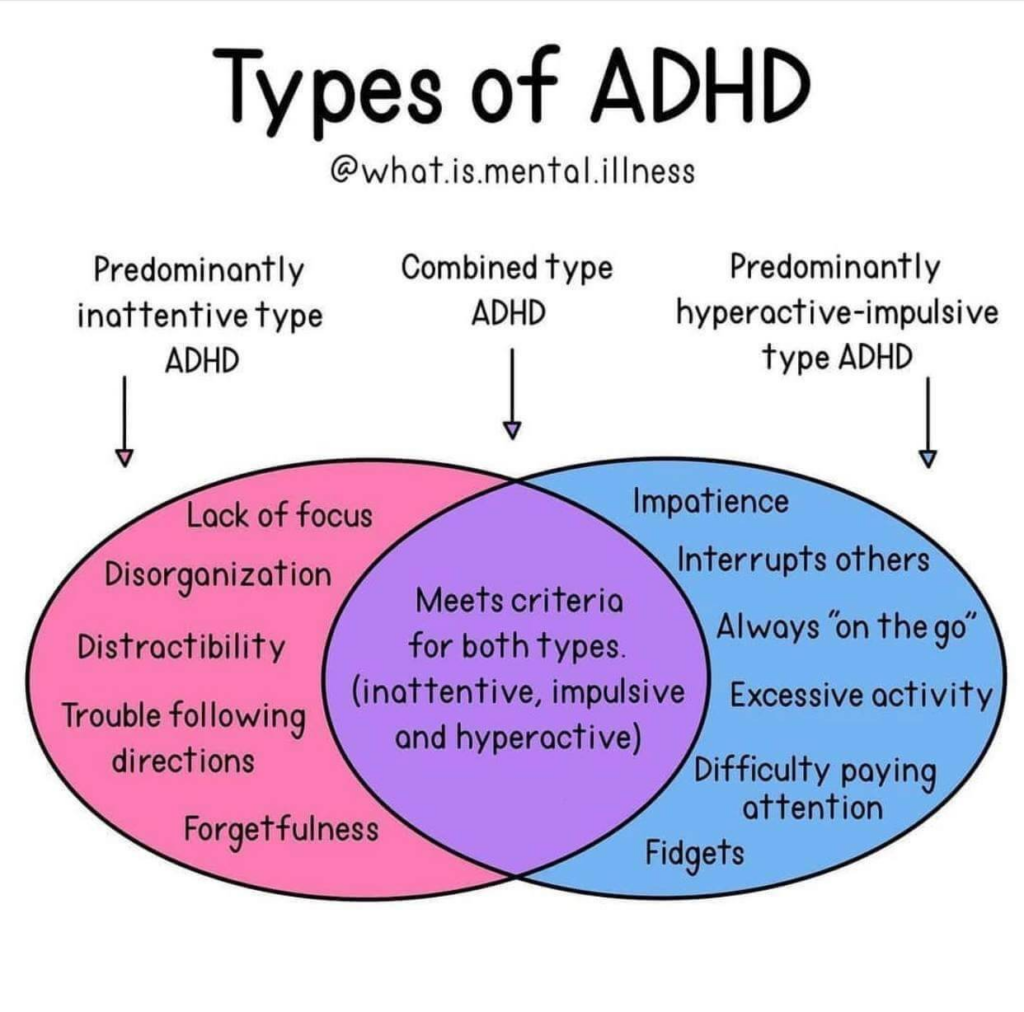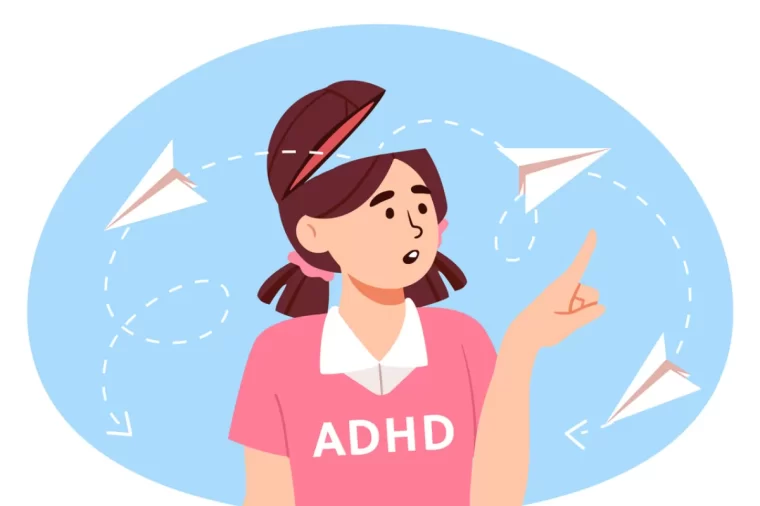Question: Is the cause of ADHD more effected by genetic or environmental factors?
Current topic: Whether the environmental factors or genetic factors are more important to developing ADHD symptoms.
Research findings:
After researching about both the impacts of genetic factors and ADHD factors, I am able to conclude that environmental factors are more important to developing ADHD symptoms (Burton et al., 2019) (Faraone & Larsson, 2018) (Green et al. 2014) (Grimm, Kranz, and Reif, 2020) (Nhs, 2021) (Paloyelis et al. 2010) (Pettersson et al. 2015) (Agnew-Blais et al. 2022) (Huang et al. 2016) (Mulligan et al. 2013) (Purece et al. 2024) (San Mauro Martin, 2018) (Schantz, 2010) (Sibley et al. 2020) (Verner et al. 2015). However, as research and technology advances, new evidence can still prove genetic factors to be more important than environmental factors, but with current research, it is logical to assume that environmental factors are more important than genetic factors for developing ADHD symptoms.

A study covering both environmental factors (household chaos) and genetic factors when it comes to ADHD symptoms, have shown that genetic factors are responsible for showing rather weak symptoms and at an earlier age, but environmental factors would cause the child to have stronger symptoms and the symptoms staying with them for longer periods of their life (Agnew-Blais et al. 2022).
Genetic factors can be viewed as planting a seed for the likeliness of the development of ADHD symptoms, and environmental factors are like the nourishment for the ADHD symptoms; moreover, in the case of ADHD, the plant can be grown even without the presence of the seed, and therefore proving that environmental factors to be more impactful (Agnew-Blais et al. 2022).
In the SWAN birth weight study, the researchers found the correlation of birth weight – ADHD symptoms to be unrelated to the genetics as the twins share very similar genes and have different levels of ADHD symptoms (Burton et al., 2019).
The SWAN study’s results suggests that the development of ADHD is less related to the genetic of the person, but rather the environmental factors of the nutrition intake by their parents during or before the pregnancy (Burton et al., 2019).
In the study of genetic risk of ADHD symptoms and reduced mathematics ability, the researchers found the twins who have very similar genes to develop the same levels of ADHD symptoms Greven et al. 2014).
However, the researchers just brushed over the fact that they also grew up in similar environments, and despite some twins differing more in genes, if they grew up in the same environment, they would still share the same level of ADHD symptoms (Greven et al. 2014). This suggest that the environmental factors of the household that the child grows up in to be more important than genetic factors.
In the study of blood-lead levels in Mexican children, the researchers found that for every 1 mg/DL difference in blood-lead content would cause the child to be more hyperactive and impulsive (Huang et al. 2016). Suggesting the environmental factors that the child is subjected to growing up would have a rather large impact on their ADHD symptom development.
However, in the same study, it is clear that the blood lead content is not related to the child exerting inattentive symptoms and other ADHD behaviours other than hyperactivity and impulsiveness, suggesting that there may be more environmental or genetic factors who are responsible for the other ADHD symptoms (Huang et al. 2016).
In a study of children with ADHD and their siblings, the researchers discovered that environmental factors and the children’s gender were responsible for 30% of the ADHD symptoms in the children with ADHD, as well as the oppositional traits identified in their siblings. This indicates that the child’s environment, as well as whether or not they have siblings, will contribute to their ADHD symptoms or make them more likely to have a worse form of ADHD as a result of their siblings’ reactions to them (Mulligan et al. 2013).
In the same study, a parent-rated ADHD test revealed that the ADHD participants’ siblings had above-average ADHD symptoms, more hyperactive and impulsive, than the control groups of siblings, implying that having an ADHD family member may result in the rest of the family developing little ADHD symptoms, above-average but not yet diagnosed with ADHD (Mulligan et al. 2013). However, although proving weak influence on ADHD symptoms, this effect would be more commonly occurring than the genetic factors like epilepsy, further proving that environmental factors have a bigger impact overall than genetic factors.
A study of near 900 ADHD subjects and over 1100 of their siblings that are under the age of 17, above age of 5, their siblings have a nonuple chance of also having ADHD than the siblings of non-ADHD subjects (Faraone & Larsson, 2018). While this appears to be a very strong argument for genetic influence on ADHD symptoms, it does not have a direct pin on the genes responsible for it, and one can assume that growing up with siblings with ADHD would contribute to a more chaotic household, and is influenced by a environmental factor rather than a genetic factor (Faraone & Larsson, 2018).
Although the study focuses on the genetic factors, looking at their results, one argue that environmental factors, such as growing up with a sibling who has ADHD, may contribute to the development of ADHD symptoms. Family dynamics, like observing ADHD-related behaviors or experiencing increased stress, could shape similar traits in siblings (Faraone & Larsson, 2018).
A study on individuals with and without ADHD across several European countries suggested that exposure to pyrethroids significantly increases the likelihood of exhibiting ADHD symptoms. The study estimated that in France, Iceland, Switzerland, Germany, and Israel, 1 in 5 ADHD cases could be attributed to pyrethroid exposure. In comparison, for a randomly selected group of participants, only 1 in 14 ADHD cases were linked to pyrethroid exposure, emphasizing the harmful effects of these chemicals on human health and their environmental influence on ADHD risk (Purece et al., 2024).
The study also highlighted substantial differences in the number of ADHD cases linked to pyrethroids between countries, which may be attributed to varying levels of exposure. For example, France reported 1,393 ADHD cases associated with pyrethroid exposure, while Iceland reported only 4. This significant variation raises concerns about the study’s sampling, suggesting it may not have adequately captured data from across Europe, given the wide disparities between countries (Purece et al., 2024).
Importantly, these findings suggest that the link between pyrethroid exposure and ADHD cannot be attributed to genetic factors. Genetic predispositions would not vary significantly between countries, yet the stark differences in ADHD cases appear to align with differing levels of pyrethroid exposure. This supports the argument that environmental factors, rather than genetics, play a critical role in these cases (Purece et al., 2024).
A study on the Mediterranean diet’s effect on ADHD symptoms found that children with ADHD generally ate fewer vegetables and less fish, rice, and pasta compared to children without ADHD. This suggests that nutrition could be an important environmental factor affecting the severity of ADHD symptoms (San Mauro Martin, 2018). Additionally, the study pointed out that when mothers smoked before and after giving birth, their children were more likely to develop ADHD symptoms (San Mauro Martin, 2018).

Some studies may show a lower hereditary estimate of ADHD in children, for self-reported studies would associate with a lower hereditary estimate due to personal bias (average 30-40% hereditary estimates), whereas parent/teacher ratings of a child’s ADHD symptoms would often suggest an average 70-80% hereditary estimate (Faraone & Larsson, 2018). This is likely caused by personal bias from the child, not wanting to be diagnosed with a neurotypical disorder, while the parents and teachers knowing the child better, and wanting them to have an easier life if they found out about their ADHD diagnose sooner. However, it is also likely that both sides are biased, and the actual accurate hereditary estimate would end up in the middle, around 50%.
The study also highlighted that children who were raised by single mothers or experienced parental separation or divorce often had ADHD symptoms that lasted longer. This suggests that family dynamics and early experiences have a big impact on how long ADHD symptoms persist, showing that environmental factors can affect not just the development of ADHD, but also its long-term impact on a person’s life (San Mauro Martin, 2018).
A review study about ADHD suggests that the ADHD symptoms linked to exposure to PCBs and lead are more likely caused by environmental factors rather than genetics. While genetics can play a role in ADHD, the research highlights how exposure to these chemicals during childhood can have a significant impact on cognitive functions like memory and spatial awareness—key symptoms of ADHD (Schantz, 2010).
The study shows that even small changes in exposure levels can lead to noticeable increases in ADHD symptoms, which indicates that these environmental factors, not genetic traits, are influencing the development of ADHD. This suggests that the differences in ADHD symptoms between individuals may be more related to their exposure to harmful chemicals than to their genetic makeup (Schantz, 2010).

For the next study, I will be concluding on all my findings in the form of a summary essay, from the results of all 3 rounds of my research. This would allow me to dive even deeper to into the information that I have gathered and form a proper conclusion about whether genetic or environmental factors are more important. Moreover, I hope that I can use the conclusion that I find throughout this inquiry project to help my future studies regarding ADHD.
References:
Agnew-Blais, J. C., Wertz, J., Arseneault, L., Belsky, D. W., Danese, A., Pingault, J.-B., Polanczyk, G. V., Sugden, K., Williams, B., & Moffitt, T. E. (2022). Mother’s and children’s ADHD genetic risk, household chaos and children’s ADHD symptoms: A gene-environment correlation study. Journal of Child Psychology and Psychiatry, and Allied Disciplines, 63(10), 1153–1163. https://doi.org/10.1111/jcpp.13659
Burton, C. L., Wright, L., Shan, J., Xiao, B., Dupuis, A., Goodale, T., Shaheen, S.-M., Corfield, E. C., Arnold, P. D., Schachar, R. J., & Crosbie, J. (2019). SWAN scale for ADHD trait-based genetic research: A validity and polygenic risk study. Journal of Child Psychology and Psychiatry, and Allied Disciplines, 60(9), 988–997. https://doi.org/10.1111/jcpp.13032
Demerath, E. W., Choh, A. C., Czerwinski, S. A., Lee, M., Sun, S. S., Chumlea, W. C., Duren, D., Sherwood, R. J., Blangero, J., Towne, B., & Siervogel, R. M. (2007). Genetic and environmental influences on infant weight and weight change: The Fels Longitudinal Study. American Journal of Human Biology : The Official Journal of the Human Biology Council, 19(5), 692–702. https://doi.org/10.1002/ajhb.20660
Faraone, S. V., & Larsson, H. (2018). Genetics of attention deficit hyperactivity disorder. Molecular Psychiatry, 24(4), 562–575. https://doi.org/10.1038/s41380-018-0070-0
Greven, C. U., Kovas, Y., Willcutt, E. G., Petrill, S. A., & Plomin, R. (2014). Evidence for shared genetic risk between ADHD symptoms and reduced mathematics ability: A twin study. Journal of Child Psychology and Psychiatry, and Allied Disciplines, 55(1), 39–48. https://doi.org/10.1111/jcpp.12090
Grimm, O., Kranz, T. M., & Reif, A. (2020). Genetics of ADHD: What should the clinician know? Current Psychiatry Reports, 22(4), 18. https://doi.org/10.1007/s11920-020-1141-x
Huang, S., Hu, H., Sánchez, B. N., Peterson, K. E., Ettinger, A. S., Lamadrid-Figueroa, H., Schnaas, L., Mercado-García, A., Wright, R. O., Basu, N., Cantonwine, D. E., Hernández-Avila, M., & Téllez-Rojo, M. M. (2016). Childhood blood lead levels and symptoms of attention deficit hyperactivity disorder (ADHD): A cross-sectional study of Mexican children. Environmental Health Perspectives, 124(6), 868–874. https://doi.org/10.1289/ehp.1510067
Mulligan, A., Anney, R., Butler, L., O’Regan, M., Richardson, T., Tulewicz, E. M., Fitzgerald, M., & Gill, M. (2013). Home environment: Association with hyperactivity/impulsivity in children with ADHD and their non-ADHD siblings. Child: Care, Health and Development, 39(2), 202–212. https://doi.org/10.1111/j.1365-2214.2011.01345.x
Nhs. (2021, December 24). Causes. Nhs.Uk. https://www.nhs.uk/conditions/attention-deficit-hyperactivity-disorder-adhd/causes/
Paloyelis, Y., Rijsdijk, F., Wood, A. C., Asherson, P., & Kuntsi, J. (2010). The genetic association between ADHD symptoms and reading difficulties: The role of inattentiveness and IQ. Journal of Abnormal Child Psychology, 38(8), 1083–1095. https://doi.org/10.1007/s10802-010-9429-7
Pettersson, E., Sjölander, A., Almqvist, C., Anckarsäter, H., D’Onofrio, B. M., Lichtenstein, P., & Larsson, H. (2015). Birth weight as an independent predictor of ADHD symptoms: A within-twin pair analysis. Journal of Child Psychology and Psychiatry, and Allied Disciplines, 56(4), 453–459. https://doi.org/10.1111/jcpp.12299
Polderman, T. J. C., Huizink, A. C., Boomsma, D. I., Verhulst, F. C., & Bartels, M. (2010). Genetic associations between ADHD symptoms and cognitive measures. European Child & Adolescent Psychiatry, 19, S47. https://doi-org.bc.idm.oclc.org/10.1007/s00787-010-0117-5
Purece, A., Thomsen, S. T., Plass, D., Spyropoulou, A., Machera, K., Palmont, P., Crépet, A., Benchrih, R., Devleesschauwer, B., Wieland, N., Scheepers, P., Deepika, D., Kumar, V., Sanchez, G., Bessems, J., Piselli, D., & Buekers, J. (2024). A preliminary estimate of the environmental burden of disease associated with exposure to pyrethroid insecticides and ADHD in Europe based on human biomonitoring. Environmental Health : A Global Access Science Source, 23(1), 91. https://doi.org/10.1186/s12940-024-01131-w
San Mauro Martín, I., Blumenfeld Olivares, J. A., Garicano Vilar, E., Echeverry López, M., García Bernat, M., Quevedo Santos, Y., Blanco López, M., Elortegui Pascual, P., Borregon Rivilla, E., & Rincón Barrado, M. (2018). Nutritional and environmental factors in attention-deficit hyperactivity disorder (ADHD): A cross-sectional study. Nutritional Neuroscience, 21(9), 641–647. https://doi.org/10.1080/1028415X.2017.1331952
Schantz, S. (2010). ADHD and Environmental Risk Factors, with Susan Schantz. EHP Publishing, 2010(1). https://ehp.niehs.nih.gov/doi/10.1289/ehp.trp120110.
Sibley, M. H., Ortiz, M., Graziano, P., Dick, A., & Estrada, E. (2020). Metacognitive and motivation deficits, exposure to trauma, and high parental demands characterize adolescents with late-onset ADHD. European Child & Adolescent Psychiatry, 29(4), 537–548. https://doi.org/10.1007/s00787-019-01382-w
UChicagoMedicine. (n.d.). Causes of epilepsy. UChicago Medicine. Retrieved October 22, 2024, from https://www.uchicagomedicine.org/conditions-services/neurology-neurosurgery/epilepsy-seizures/causes
Verner, M.-A., Hart, J. E., Sagiv, S. K., Bellinger, D. C., Altshul, L. M., & Korrick, S. A. (2015). Measured prenatal and estimated postnatal levels of polychlorinated biphenyls (pcbs) and adhd-related behaviors in 8-year-old children. Environmental Health Perspectives, 123(9), 888–894. https://doi.org/10.1289/ehp.1408084

